Why we ran it: to find out if a new platform and PHEV power made the Jaguar E-Pace fully fighting fit
Month 4 - Month 3 - Month 2 - Month 1 - Specs
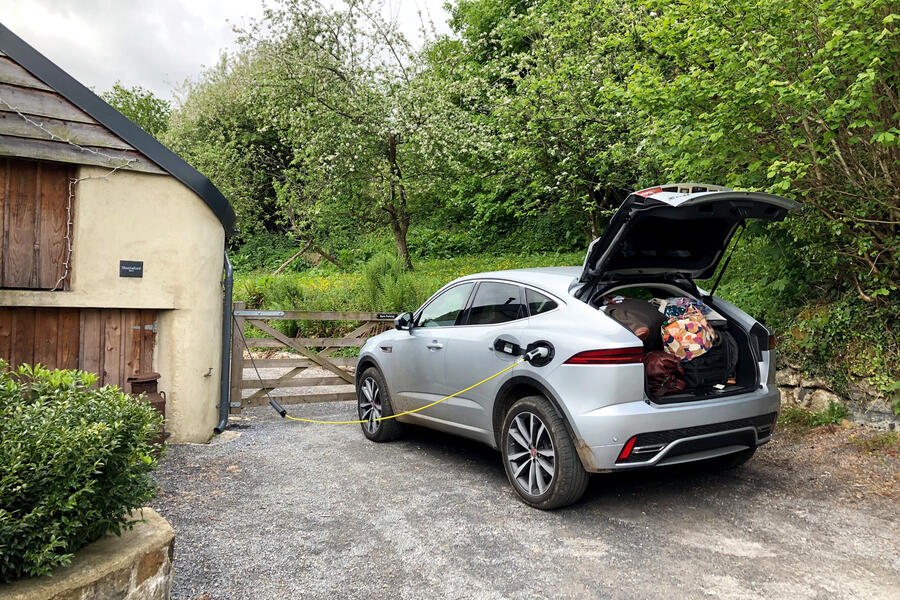
Life with a Jaguar E-Pace: Month 4
Plug-in hybrid departs with a reputation for excelling at long trips and urban trudges – despite two shortcomings - 28 September 2022
Happily, the E-Pace P300e encompasses the best of modern-day Jaguar: it is the brand’s most relevant and affordable model (in the luxury realms); it has been updated enough to stay competitive in terms of electrification and electric range (although soon 39 miles will look poor...); and it incorporates the firm’s best infotainment system yet.
It’s also incredibly comfortable without neglecting some half-decent driving dynamics – and this P300e plug-in hybrid is the E-Pace at its best for that, being positioned as the sporty variant in the model range. I’ve always been glad to get behind the wheel. It’s a familiar, cosseting spot,whichisexactlywhatIwant from luxury – comfort packaged in a desirable and quality way.
That extends to the design of the interior and its intuitive functionality, ranging from the easy-to-manage knobs for volume, climate control and heated seats to the Pivi Pro infotainment system, which is aesthetically pleasing but also allows you to find what you’re looking for with relative ease – not something that’s widespread on touchscreens. Having wireless Apple CarPlay connectivity is another boon.
Driving around town on electric power (34 miles was the typical range compared with the official 39 miles) in this compact SUV is a relaxing experience – that lovely refinement from the powertrain paired with a compliant suspension set-up for the inevitable speed bumps encountered. The steering is on the light side but still has respectable feedback, so it’s satisfying to drive at low speeds in urban areas.
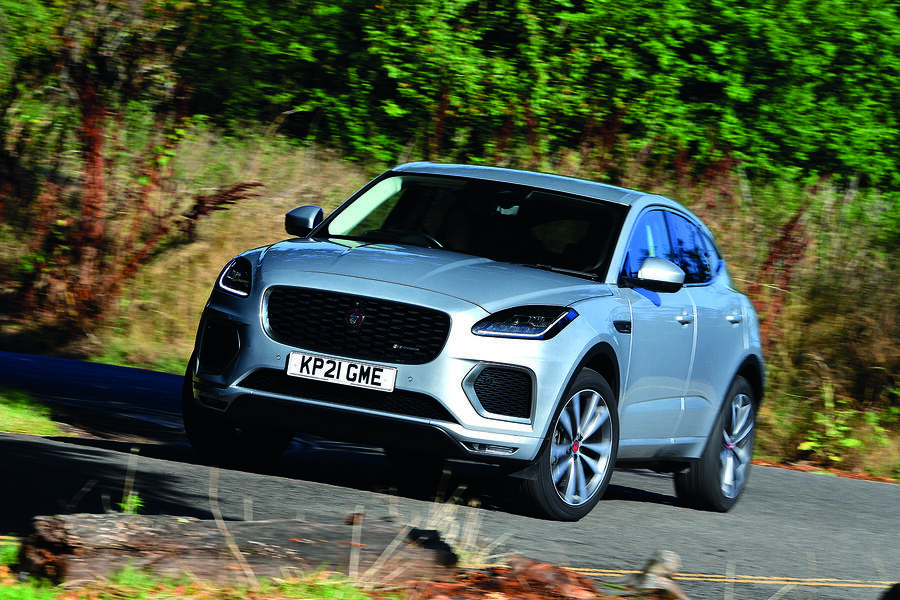
Put the car on some winding roads and it’s also a pleasure to feed the wheel through your hands because while the steering doesn’t have the feel of, say, a BMW X3, the body control is such that pointing the E-Pace into corners can still be a rewarding experience. And then there are the long journeys, of which I did plenty in the E-Pace, most notably two separate trips to Cornwall and Devon.
It is an excellent tourer thanks to that comfort, lapping up the motorway miles and then remaining composed on the questionable surfaces in the narrow lanes of deepest Cornwall. Those trips also allowed me the rare luxury of having an afternoon snooze in the passenger seat, where the armrest positions are just right to fully relax.
There are two areas in which the car fell down during our loan. One is poor packaging, which causes a lack of space in the boot and rear seats. It is workable for a family of three, but for holidays we always had to pack luggage into the rear seats, which would become difficult for a family of four. With a cumbersome child’s car seat in the rear, the front passenger’s legroom is seriously limited, even for me at 5ft 6in.
The other issue is the electrical faults recently reported (14 September), which reinforced those, rightly or wrongly held, preconceptions of Jaguar Land Rover vehicles not being the most reliable. When the throttle failed to move the car for a few long seconds at a roundabout or traffic lights on a couple of journeys before the power kicked in, I felt incredibly uneasy.
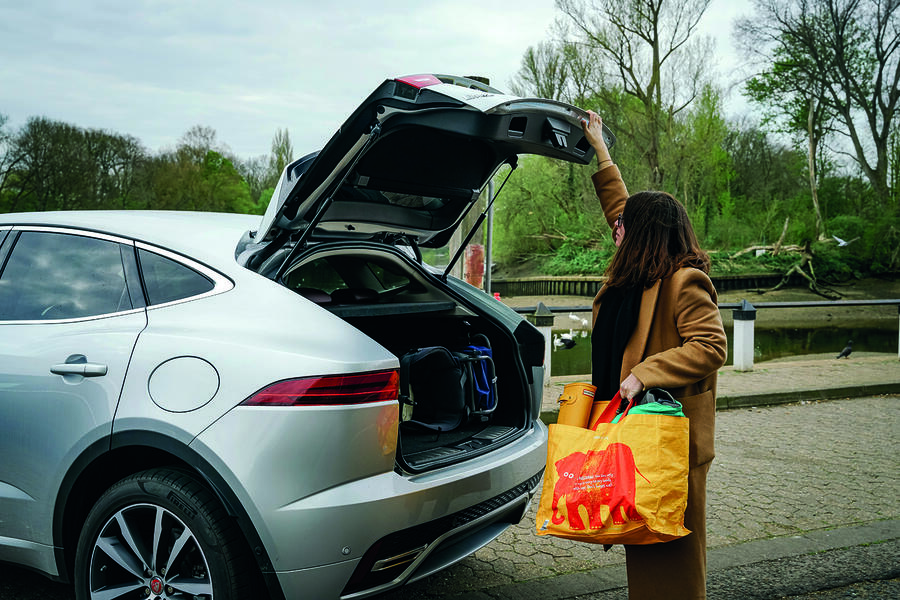
The other broader issue of the electrical systems seemingly shutting down (no electric power, no stability control, no regenerative braking) didn’t render it unusable, but still, it’s not ideal, is it? I left it a while before talking to Jaguar about the problem because I hoped it would right itself, but if I were the owner of this car, I’m sure I’d have taken it to a dealer much sooner. After returning from Jaguar, it worked seamlessly, so let’s be optimistic and hope this was a blip rather than a recurring, underlying issue.
Either way, that problem inevitably had a major impact on the car’s fuel consumption. While it’s well known that plug-in hybrids hardly ever deliver their claimed fuel economy unless, presumably, one runs on zero emissions for 90% of the time, the E-Pace was using electric power less than desired and that is reflected in the not-so-good MPG figures. It might be better than Piers Ward’s Mk1 Disco Sport (see Second Opinion) but that’s not saying much...
But despite all that, I was very sorry to see the E-Pace go: it really is a delightful companion for everyday life, both in town and for long journeys. It’s a shame to think that it will be no more when Jaguar’s new hyper-expensive era arrives in a few years. There are many positives that can be taken from it and I’m hopeful those will be incorporated into Jaguars of the future.
Second Opinion
It’s funny how these long-term tests go. At the start of Rachel’s loan, I was very envious of her Pivi Pro infotainment compared with the version in my household’s Mk1 Disco Sport. But as this cost of living crisis bites, I’m now more jealous of her fuel economy: 45mpg over a few months compares mighty favourably to the low 30s we get in our family hack.
Piers Ward
Love it:
Slick infotainment This is a smooth-running infotainment system that is well designed and intuitive to use.
Sensible Ergonomics The existence of real-life control knobs! A particular favourite was a volume dial in the centre console.
Luxury comfort This ensured it was a joy to spend time in the E-Pace, particularly on long journeys.
Loathe it:
Opening the boot Please offer automatic boot opening as standard on this level of car.
Provision of space The packaging of the car means space for both occupants and detritus isn’t optimum.
Final mileage: 10,521
Plug-in hybrid system becomes home to some gremlins - 14 September
This plug-in hybrid Jaguar E-Pace has been a fine companion for the past few months and in terms of driving dynamism and comfort particularly, it feels one of the best in its class.
There has been one major, recurring hiccup, though: on occasion, the electric side of the powertrain doesn’t work, and when it doesn’t, nor does the stability control, lane keeping assistance, regenerative braking or parking sensors. This has been far from ideal, and just to add insult to injury, the battery’s charge decreases even when this fault is occurring.
The lack of electric power naturally affects the overall fuel economy, so our current 44.3mpg is far from a best-case scenario. When it first started happening, turning the car off and on seemed to reset it and everything worked fine, but over time, even that old trick stopped doing the job.
A far rarer but scarier issue arose when I was when trying to move off from standstill, say at traffic lights or a roundabout: there was seemingly no power when I put my foot on the throttle. It eventually came through, although I was never quite convinced that it would, and it felt dangerous, not being able to move off instantly.
Naturally, I returned the car to Jaguar for a fix. Having investigated, they said: “The E-Pace PHEV has now been repaired and assessed through our workshop. We’ve run all the latest software updates and our checks reflect a resolution to the issue. Any customers experiencing similar performance issues should contact their retailer for advice.”
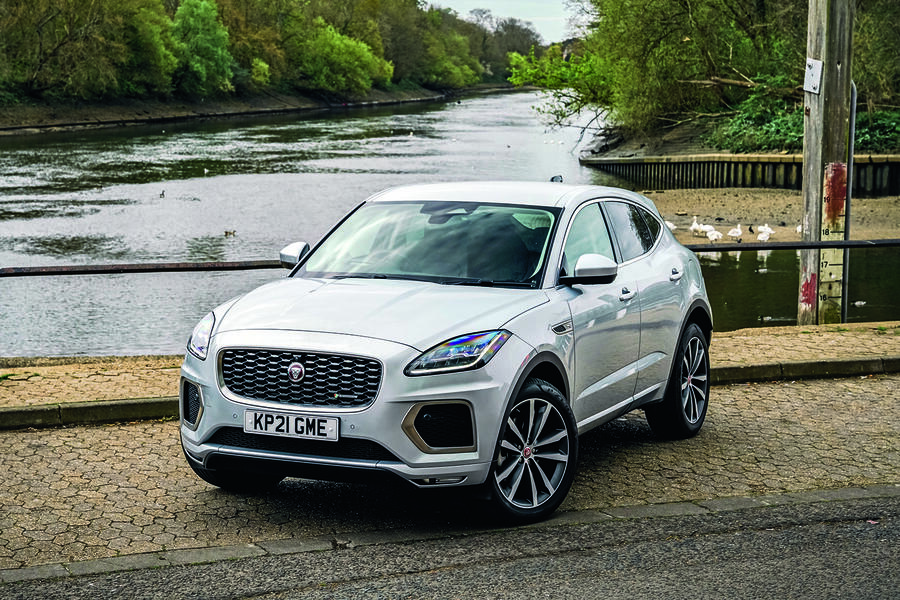
Since returning, the E-Pace has been running like clockwork. It’sanincrediblyusableday-to- day car, which deserves its place among the best luxury compact SUVs. But, of course, reliability is crucial for all car makers, not least premium ones.
Jaguar Land Rover is acutely aware of the broader issue. On the topic of quality and reliability, CEO Thierry Bolloré told us two months ago that promised improvements are being delivered. “We have progressed everywhere, but especially with our newest models,” he said. “The new Range Rover is now setting an extremely high standard, and we are doing very well with the new Defender, too.”
It sounds like everything is going in the right direction, then – and Bolloré will know that it needs to, considering his grand plan to reinvent Jaguar as an ultra-luxury electric car brand from 2025, going up against the likes of Bentley.
Love it
Sitting comfortably
It’s always a pleasure sliding into the driver’s seat, thanks to its cosseting comfort.
Loathe it
Going haywire
Recurring electric problems are annoying on a £50,000 car. Happily, they’re now resolved.
Mileage: 1102
Life with a Jaguar E-Pace PHEV: Month 3
Jaguar app packs a genuinely useful safety feature - 31 August
I’m often distracted or in a mad rush when exiting the E-Pace, which means I’m a serial offender in terms of forgetting to lock it – something I’m not proud of. Anyway, Jaguar’s phone app alerts you if the car remains unlocked 15 minutes after being parked. It’s one of the most useful car features I’ve ever had,
Mileage: 9921
New Pivi Pro infotainment system addresses JLR’s in-car Achilles heel - 17 August
It wasn’t so long ago that Jaguar Land Rover was notorious for not very good infotainment systems, especially if compared with those of premium German rivals.
With the arrival of the Land Rover Defender in 2019 came the new Pivi Pro system. It has inevitably since been shared across the JLR range, and so it finds itself in our E-Pace.
If the E-Pace is anything to go by, Pivi Pro is excellent. It’s well designed, relatively easy to use (there’s no touchscreen-based infotainment that I’ve used yet that I would say is perfect) and it hasn’t crashed or malfunctioned once. And it looks even better when you consider the Volkswagen Group’s latest equivalent system, which can be glitchy to say the least.
Apple CarPlay, which is my default infotainment interface for around 80% of the time, works brilliantly on the 11.4in screen. It connects effortlessly every time and it’s easy to navigate away from CarPlay to change the radio station, for example, without much distraction.
The design of the icons away from CarPlay is clear and attractive and feels just a little bit more special than those of German counterparts, which only adds to the premium air of the model.
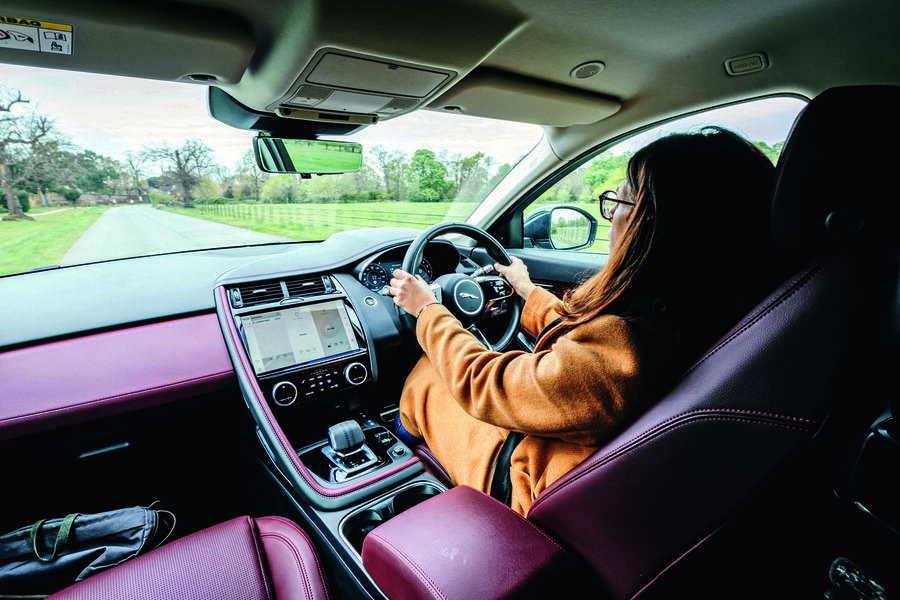
Other features include a clear measure of in-car air quality on a sliding scale from green to red; eco data and ways to improve your economy; how to launch low-traction mode when the terrain or weather permits; and the ability to control the heated seats and climate.
Happily, there’s also the option to control the heated seats and climate via good old-fashioned dials once you know what’s what. Push the dial to control the heated seats, pull the dial to increase or decrease the blower force and turn the dial to adjust the temperature.
The manual buttons in between the climate dials allow you to turn the air-con on and off and so on, all making for an easy life.
As I’ve written before, the manual volume knob conveniently reached in the centre console while driving is miles better than having to adjust the volume on a screen (there are steering wheel controls too, but I’ve never been fully on board with those).
There’s nothing particularly revolutionary about the E-Pace’s infotainment system, but what JLR has managed to do is embrace both the best of the old world and the new and execute a handsome-looking, intuitive set-up, adding massive appeal to the car in the process
Love it
Child's play
Can all Apple CarPlay connection processes be this simple, please?
Loathe it
Screen smudges
If someone could create a self-cleaning touchscreen, that would be excellent. Thanks.
Mileage: 9501
Passenger seats are luxurious - 10 August
Taking a break from driving on a trip to Cornwall recently, I found myself luxuriating in the E-Pace’s passenger seat. I discovered the door rest and centre console were just the perfect position and height for me to rest my forearms and hands on and aided relaxing deeply into the seat. The perfect nap set-up.
Mileage: 9035
While our PHEV is in for repair, will its stand-in woo us away to a diesel life instead? - 27 July
It’s the perennial modern-age question: should I buy an electrified car or stick with what I know?
We’ve been running the plug-in hybrid E-Pace for a couple of months now, but while it’s back at Jaguar with some as yet undiagnosed electrical problems, we’ve borrowed an E-Pace D200, the mild-hybrid diesel offering in the compact SUV range. In fact, for the moment, it’s the only other E-Pace currently available to order alongside the PHEV, because of the semi-conductor shortage.
We’re in the D200 R-Dynamic SE, one trim above our R-Dynamic S PHEV, but to compare like for like, in S trim the diesel costs £42,840 and the plug-in hybrid is £48,795 (a sizeable £2800 price rise since our test car’s arrival). In personal lease terms, based on a quick look on the web, the diesel is around £610 a month for three years at 12,500 miles a year whereas the PHEV is £670.
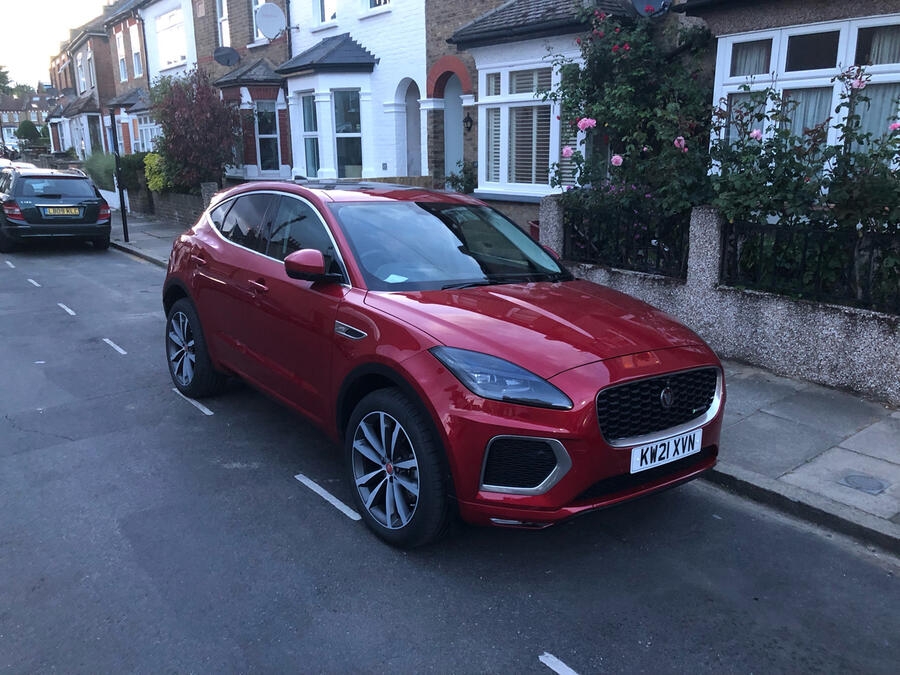
Other figures on paper? The PHEV’s claimed CO2 emissions are 44g/km and combined consumption is 141mpg, while the diesel is 173g/km and 43.9mpg. If it’s a company car, the difference in benefit-in-kind tax is huge: 8% for the PHEV and 37% for the diesel.
In reality, our time so far with the PHEV means the average fuel economy is pretty much in line with the diesel, at around 41mpg. Admittedly, that’s not optimum: I use the full-electric mode sporadically but not as much as I could, so it could be higher but it’s hard to imagine it ever being at 141mpg, although that’s true of all plug-in hybrid figures.
Visually, there’s little difference between the two cars other than the vibrant red of the diesel versus the sedate silver of the PHEV. The wheels of the diesel are slightly less kerbable, there’s a more business-friendly black leather interior rather than the slightly more flash cream and burgundy of the PHEV, and there are a few different options, most notably the £990 panoramic sunroof.
Getting into the diesel after time in the PHEV, the most prominent difference is the lack of immediate smooth power facilitated by the electric motor and instant torque of the PHEV. For driving around town, it takes a bit of readjusting to the combustion-engined delivery of power and it feels more jarring.
You notice the gearbox shifting around from its naturally high eco gear selection to a couple of ratios down to give you the torque you want. In the PHEV, it’s mostly smooth sailing on EV power alone around town so responses are almost instant. The D200 is naturally noisier, too, although for a diesel, the engine is well insulated and refined.
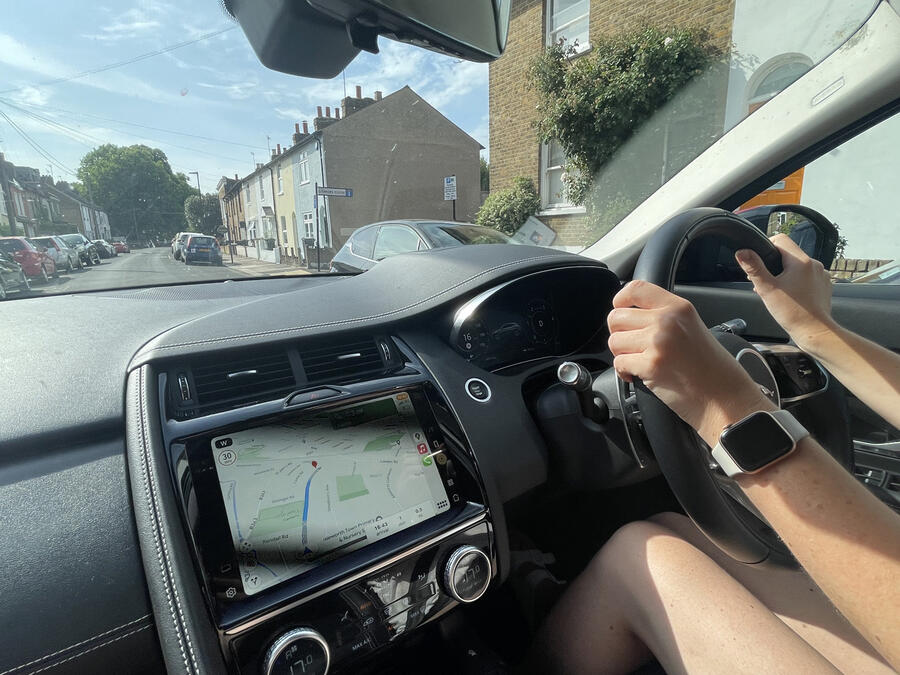
As has always been the case with diesels, it’s comforting to see on the dashboard the high number of miles left in the fuel tank and only a dent on the fuel gauge after a decent journey. In terms of mileage per tankful, it has almost double that of the PHEV, at just under 600 miles.
That feeds into diesels as the long-standing powertrain of choice for mile-munching – and this D200 is very much at home on the motorway, although it’s happy around town, too.
Acceleration is slower than in the PHEV – 0-62mph takes 8.4sec to the PHEV’s swift 6.5sec – but it’s still good for getting up to speed. The PHEV’s driving dynamics are better – not surprisingly when it’s billed as the sporty E-Pace – but the diesel is no damp squib in this arena, either.
So which would I go for? For my lifestyle, living in town but adding plenty of long-distance miles at the weekends, the PHEV feels the more natural fit. The P300 is a refined, comfortable, enjoyable car – all words that could also describe the diesel, but with diesel prices constantly on the up and high taxation, the PHEV feels like a more sensible long-term solution.
Love it
Diesel's longer legs
D200’s diesel tank means fewer stops.
Loathe it
Diesel's get up and go
Moving off in the D200 isn’t as smoothly satisfying as in the PHEV.
Mileage: 9035
Parking sensors have a mind of their own - 20 July
I always caveat these moans by saying I fully support anything that makes a car safer, but the E-Pace’s oversensitive sensors are driving me crazy. I can be just sitting in traffic – not parking or reversing – and the sensors start going mad. It’s unnecessarily alarming, and it’s particularly annoying when it wakes my napping toddler.
Mileage: 8999
A high-tech indicator adds a premium feel - 6 July
I wrote in a recent Subscriber Extra email about the luxury feel of the Jaguar E-Pace’s indicators, explaining there’s a lightness to the touch and sound that make them feel premium. Now I’ve discovered something even cleverer: they’re silent when audio is coming through a phone connected to the car. The most obvious example is when I’m on a call. A lovely touch.
Mileage: 8703
Life with a Jaguar E-Pace PHEV: Month 2
Hauling an SUV around town is easier with a second set of eyes - 29 June
When the Mk2 Range Rover Evoque arrived in 2019, it introduced a bit of kit so nifty that we gave it that year’s innovation gong at our annual awards ceremony. Both elements of it – ClearSight Ground View and ClearSight rear-view mirror – are now available across much of the Jaguar Land Rover stable.
Indeed, they are fitted to our Jaguar E-Pace as part of the Technology Pack (£1220), which also brings wireless phone charging, a head-up display and an interactive driver’s display.
ClearSight Ground View is the realisation of the transparent bonnet idea first seen on the Land Rover Discovery Vision concept in 2014, while ClearSight rear-view mirror uses a camera to show what’s behind you, rather than a mere reflection.
What seems so smart about the technology is how it suits the two core audiences that JLR is playing to (the outdoorsy rural community and the SUV-driving urbanites), because this tech was primarily created for easier off-roading but is equally useful in town centres and tight parking spaces.
Like the majority of E-Pace owners, it’s fair to say, I am doing a lot more driving around town than green-laning, but the theory stands: I’m using both ClearSight features plenty and finding them useful.
The Ground View ‘transparent’ car when parking is particularly helpful for lazy me when I’m parking at the end of a parking bay and wanting to know that I’m right on the edge of the white line marking it out so that I don’t waste any space for others.
Plus, it helps to make sure that I’m parked suitably close to the kerb, which is harder than you would think in the E-Pace, because it has a bulbous body that, even when moving the side mirrors down to see the kerb (an everyday occurrence when you don’t have a driveway), makes it hard to see quite how close the wheels are (or aren't) to where they should be.
The ClearSight rear-view function is turned on/off simply by flicking a toggle underneath the mirror. It takes some getting used to, because when you look at it, your point of focus is different.
Rather than looking at cars moving live, you need to adjust to watching a camera that serves the same purpose.
It’s great when the car is full to the brim and you would therefore struggle to see out of the back, but one obvious flaw I didn’t realise until recently is that it means I can’t see my child in the back.
Even so, both systems serve a convenient, useful purpose. No, they’re not must-haves, but they do make everyday motoring easier.
Love it
Fancy lenses
Anything that helps parking in London is a bonus in my book.
Loathe it
Vision gone funny
The digital rear-view mirror is a bit disorienting to begin with.
Mileage: 8101
Volume knob is a welcome retention - 15 June
Find joy in the small things, they say. I’m doing that with the volume knob in the E-Pace, found handily on the driver’s side of the centre console. I know that most cars have volume controls on the steering wheel now, but I would much rather a knob in an easily reachable position over a wheel-mounted control or an out-of-reach icon on a touchscreen.
Mileage: 7502
E-Pace is excellent for long drives but load space is lacking - 8 June
A long-awaited holiday to Devon recently provided me with an ideal chance to test all of our Jaguar E-Pace’s capabilities, from motorway muncher to rural daily driver.
First came the challenge of packing everything for the week, as this SUV’s packaging is one of its weaker points, with a boot smaller than the BMW X1 and Volvo XC40.
Our friends at What Car? measured its size like this: it will take six carry-on suitcases below the parcel shelf, compared with eight in the XC40 and nine in the X1.
On the plus side, the boot is a useful square shape with a wde recess and no lip to make loading and unloading awkward. Plus, I know that it can take golf clubs, because I saw a live attempt to load a set by my dad when contemplating his next car.
I decided it would be better to pack a few smaller bags rather than medium suitcases to make the best of the room and took out the parcel shelf for more freedom. With a mixture of boot space and one side of the rear passenger space, everything went in comfortably and I could still see out the back.
On the road, we cruised out of London in EV mode, fully charged to 34 miles (official WLTP electric range is 39 miles), before going into hybrid for the long M3 stretch and then the endless A303 westward.
The knees of my 6ft 2in partner weren’t touching the glovebox with a child seat behind, but they weren’t far off.
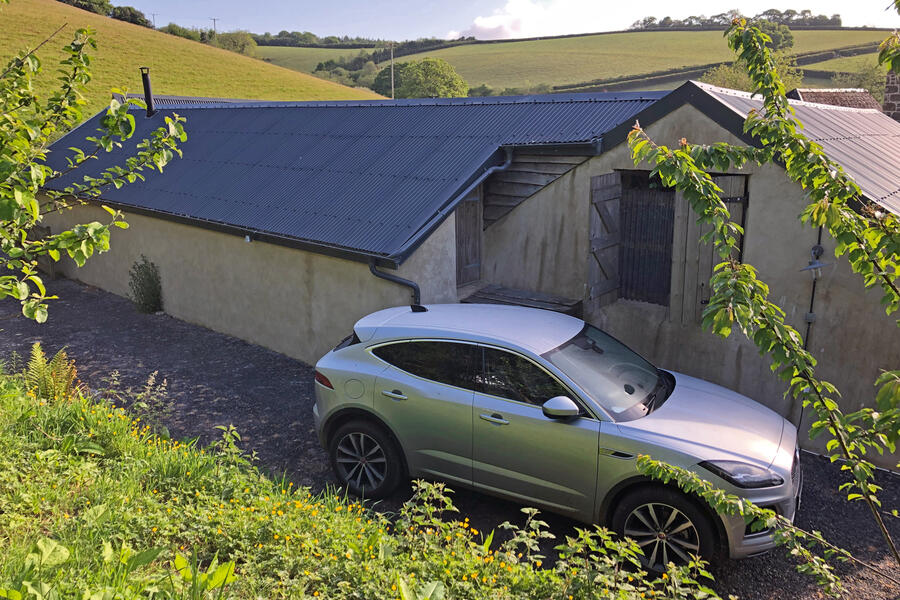
On arrival at a barn in deepest Devon, I was pleased to see a three-pin plug on the drive – not as good as a dedicated EV charger but still capable of doing the job. That was lucky, really, because I had a quick look at charging points in that part of the world on Zap-Map and there were only three: two at people’s homes and one public charger.
Our barn was on a tiny winding lane, where I prayed that nothing was coming the other way. The E-Pace felt a little out of place (this is workhorse country, where I saw more Subarus and Ford Rangers than premium brands), but nonetheless it suited the lifestyle well. It’s compact enough for passes on tight roads and has four-wheel drive, which you would most definitely need in the colder months.
Once at our destination, I didn’t venture too far, so I could survive almost entirely in EV mode throughout the week, using petrol only for the drives there and back.
The infotainment system worked brilliantly and we were comfy for the whole four-hour trip, feeling cosseted in a good way and never fidgety.
Objectively, then, the E-Pace was a brilliant car for the holiday, making life easy at every turn. My only reservation would be if a family of four required it for a long drive. I’m certain it’s doable, but I would have to significantly sharpen my packing skills to achieve it.
Life with a Jaguar E-Pace PHEV: Month 1
Welcoming the E-Pace to the fleet - 4 May 2022
Let’s address the elephant in the room: what’s happening at Jaguar? Not a lot, it seems. At least on the face of it, although presumably the team at its Coventry headquarters are incredibly busy preparing for its reinvention, which is due in 2025. At that time, it plans to relaunch as an electric-only luxury brand on a par with Aston Martin and Bentley.
That seemingly doesn’t leave much room for its existing line-up, then, which is led by the Jaguar F-Pace, Jaguar I-Pace and Jaguar E-Pace, an example of which has just joined our long-term fleet. While it’s hard to see how these cars fit into the new line-up, they remain very relevant for the market right now, all SUVs for families, one fully electric and the other two with plug-in hybrid powertrain options.
Of the three, the E-Pace sold the fewest last year, although I would wager that’s because Jaguar directed its chip supply to the more expensive, profitable models and/or those (the I-Pace) that would help bring down its average emissions to avoid fines.
The E-Pace sold just over 3600 units last year – around the same number as its Porsche Macan rival but still nowhere close to sales of another foe, the Audi Q3.
This latest E-Pace even went so far as to adopt a new platform when it arrived last year as an update of the car that was launched in 2017.
It’s the PTA platform that was used for the Land Rover Discovery Sport and Range Rover Evoque overhauls of the previous year. Jaguar claimed the new underpinnings benefit handling, ride and overall refinement, but most importantly, it accommodates both mild-hybrid and plug-in hybrid powertrains, which were crucial for the E-Pace to live on.
There are now five models available, all of them hybridised other than the entry-level diesel. Most are mild hybrid, but the range-topper (our car) is a plug-in hybrid.
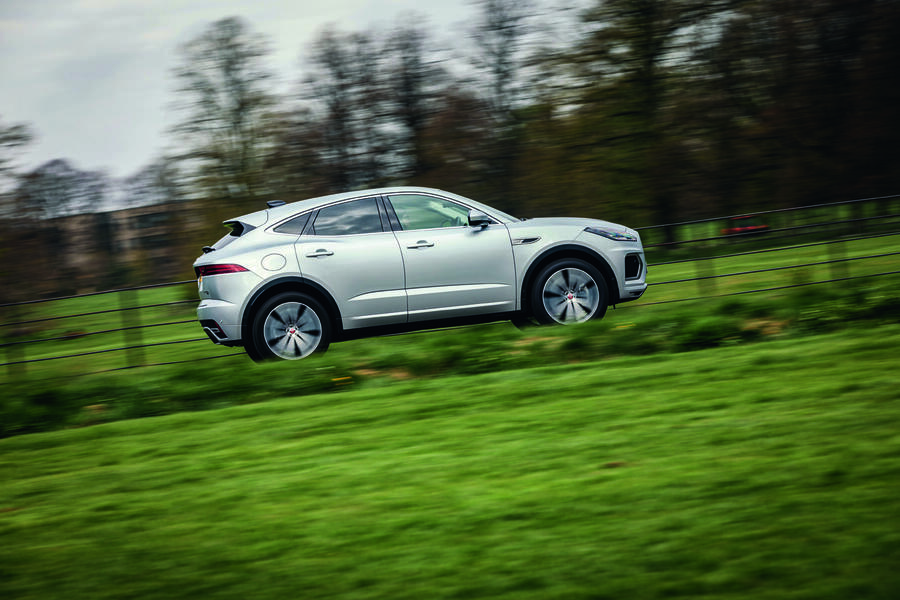
Named the P300e, it mates a 197bhp 1.5-litre three-cylinder petrol engine with a 107bhp electric motor on the rear axle and a 15kWh battery under the boot floor. As the fastest- accelerating E-Pace, it has a 0-62mph time of 6.5sec, yet also gets 141mpg and therefore CO2 emissions of just 44g/km. The electric-only range from a full charge is said to be 39 miles.
R-Dynamic S is the lowest of three trim levels available for the P300e, costing £45,995. But add a quite absurd number of options (see right) and our car costs more than range-topping HSE trim.
Without all those extras, there’s still a long list of equipment as standard, the highlights including a 3D surround-view camera, torque vectoring by braking, dynamic stability control and the 11.4in Pivi Pro infotainment system.
The latter is a monumental step change for Jaguar Land Rover, which has often been criticised for trailing its German rivals in terms of infotainment. It has therefore regularly updated its offering in an attempt to catch up. My early impressions of the system, first introduced in the new Land Rover Defender, suggest that it has finally managed to achieve that.
In keeping with the handsome and premium-feeling interior, the infotainment system is sharply designed and to these eyes classier than its German equivalents. Time will tell if that translates to a good daily user experience.
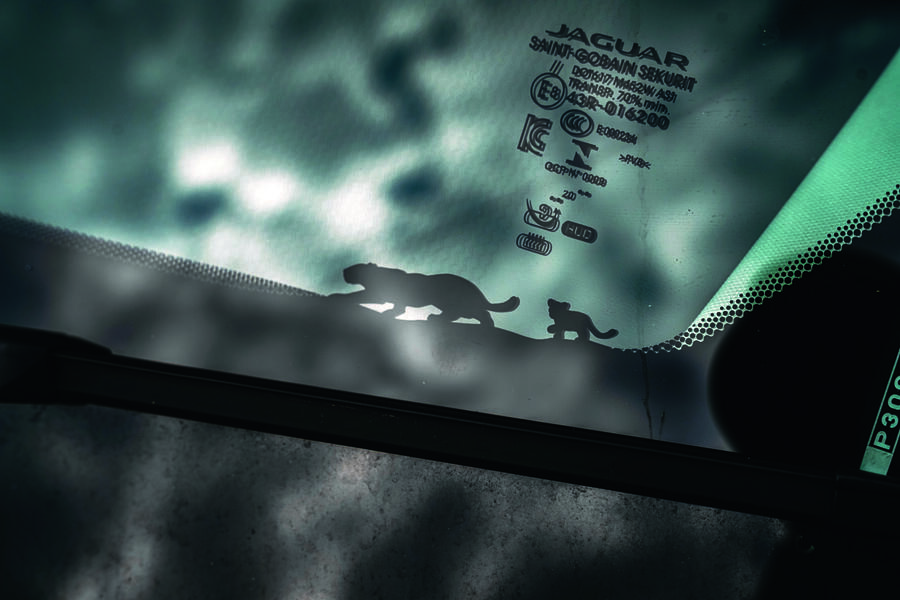
The overall experience so far is similarly positive. This needs to be an excellent car, considering how populated the luxury compact SUV space is now, and from the off it has surpassed expectations.
I’ve mentioned the interior, which is comfortable and cosseting, but it’s also excellent to drive, with satisfying and direct steering that’s dynamic yet also easy to get along with, and a compliant if firm ride (due to our car’s 20in wheels, which cost an extra £1240).
I already know the E-Pace won’t win on the practicality front. Its boot is considerably smaller than the Q3’s and the cabin likewise. But it has so far proven a very usable space for people and their many things. The electric-only range is typically 34 miles. It takes just under 90 minutes to charge it from 0-80% on a public 7kW charger but a happy half hour on a 50kW fast charger – if you can find one.
It’s making urban life particularly relaxing, but it has the pace and comfort to suit long journeys too.
The next few months will give us the chance to see if the E-Pace continues to impress in varying situations and environments, and whether this plush British-born SUV can match the appeal of its many high-calibre rivals.
Second Opinion
Coming from a Land Rover-owning clan (a Mk1 Discovery Sport with the next great antibiotic discovery being cultured on the back seats), I was staggered to see the improvement of the infotainment in the latest E-Pace. That Pivi Pro system is so much better. It will be interesting to see what progress has been made elsewhere in the coming months.
Piers Ward
Jaguar E-Pace PHEV specification
Prices: List price new £45,995 List price now £48,895 Price as tested £51,645
Options: Hakuba Silver metallic paint £670, 20in split- spoke satin grey with contrast diamond-turned finish £1240, 12–way heated electric driver memory front seats with two-way headrests and 40/20/40 folding with centre armrest £350, Technology pack (including ClearSight interior rear-view mirror, wireless device charging with phone signal booster, head-up display and interactive driver display) £1220, cabin air purification £335, Meridian sound system £600, heated steering wheel £205, privacy glass £370, blindspot assist and rear traffic monitor £360, home charger cable £300
Fuel consumption and range: Claimed economy 141.0mpg Fuel tank 57.6 litres Test average 45.6mpg Test best 56.3mpg Test worst 38.2mpg Real-world range 575 miles (total), 34 miles (electric)
Tech highlights: 0-62mph 6.1sec Engine 3 cyls, 1498cc, turbo, petrol, plus electric motor Battery 15kWh (total) Max power 305bhp at xxxrpm Max torque 398lb ft at 1600 - 4500rpm Transmission 8-spd automatic Boot capacity 494 litres Wheels 20in, alloy Tyres 245/45 R20 Kerb weight 2670kg
Service and running costs: Contract hire rate £618 CO2 44g/km Service costs None Other costs None Fuel costs £803.35 petrol, plus £65 electricity Running costs inc fuel £868.35 Cost per mile 19 pence Faults Electrical issues

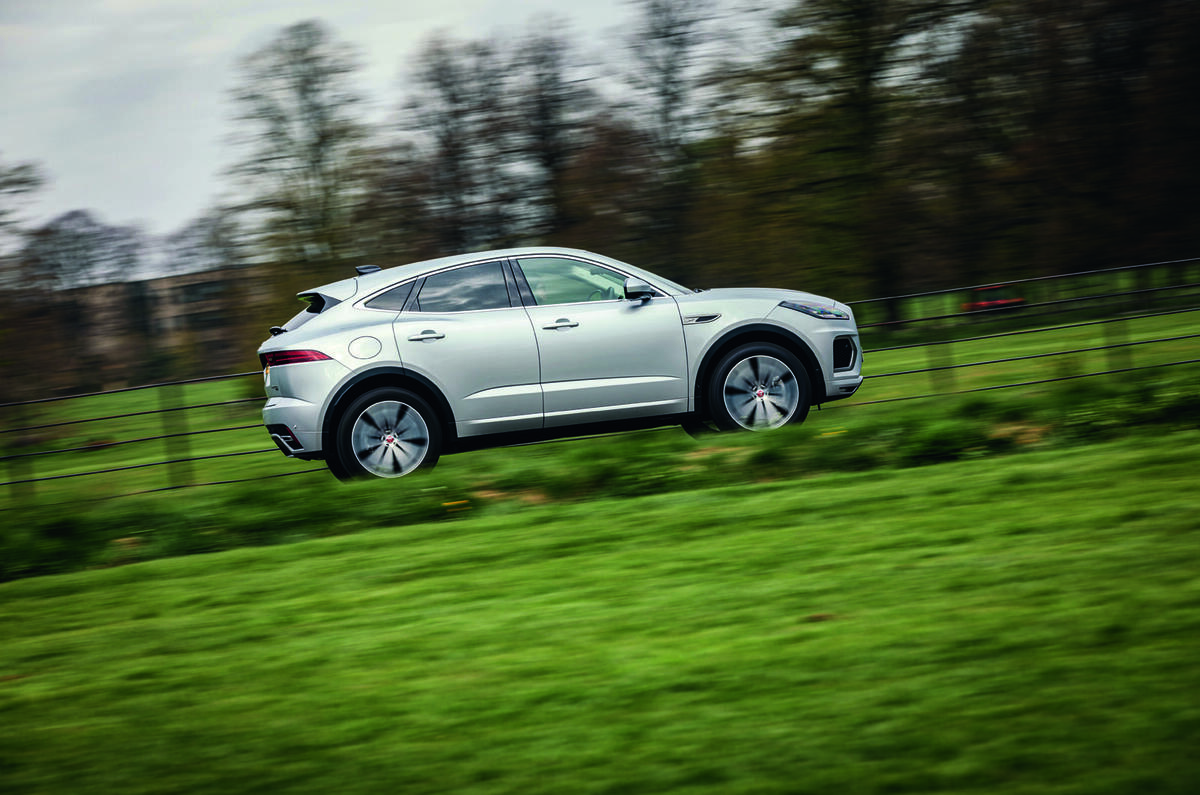
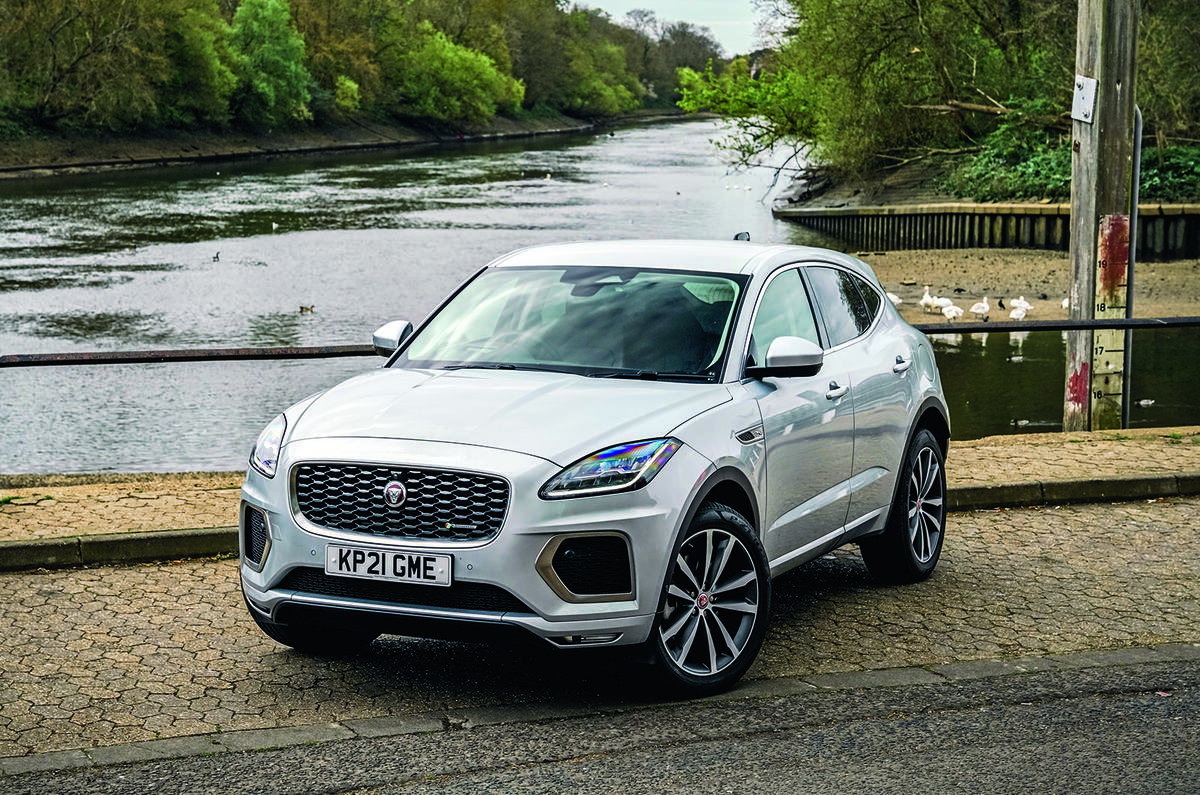
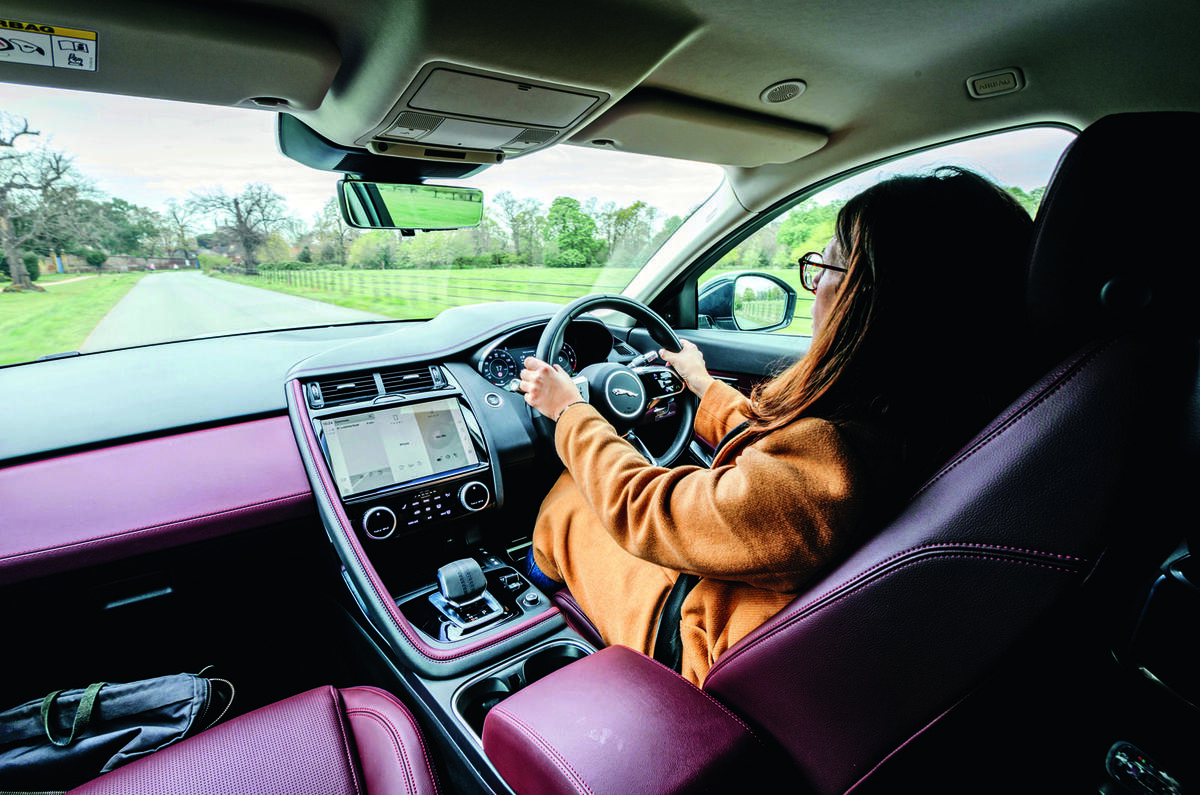
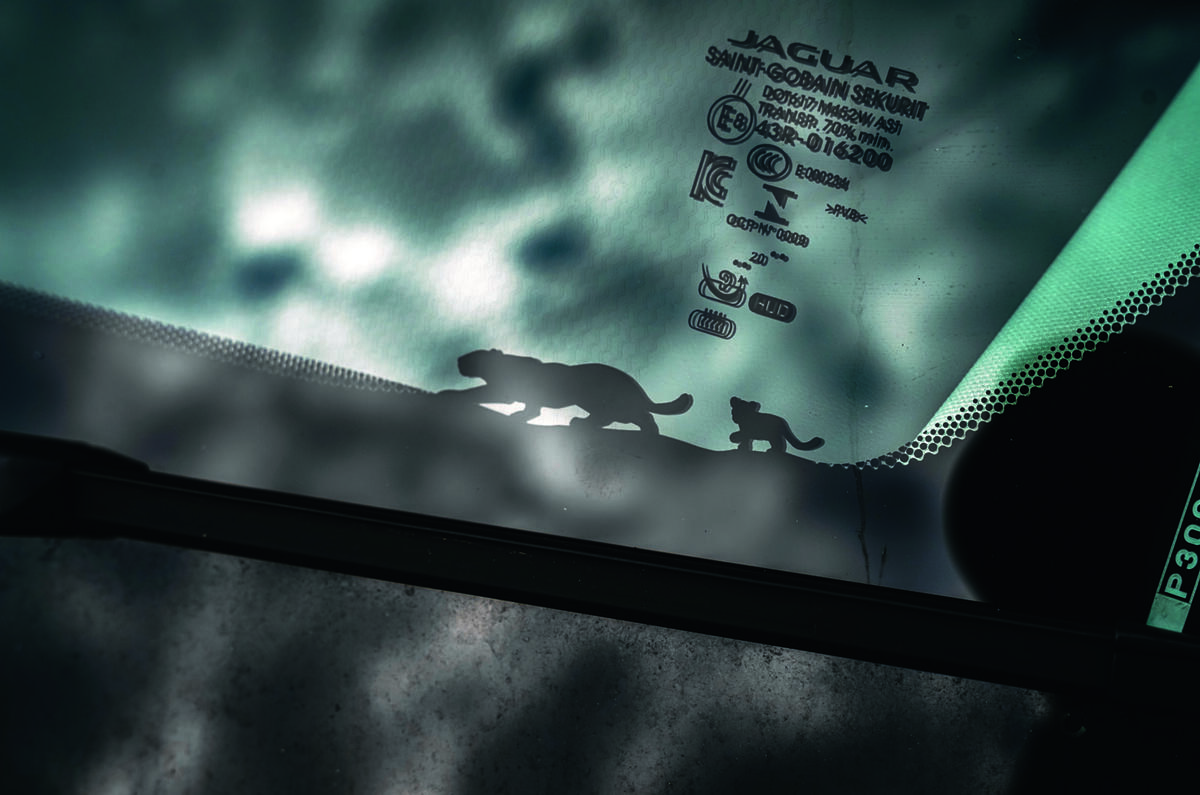


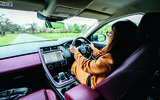



Join the debate
Add your comment
petrol
i would love to know what this would be like on just petril ie when battery depleted as I buy my own car not bothered about the low tax rate but economy .my guess is not worth the extra outlay as petrol probably uses more fuel than larger diesel
"I hoped it would right itself" is not a phrase that should ever be in a long term test report. Surely you are supposed to tell us about all aspects of running the car, including customer service and response to complaints?
Here is an expensive, cramped crossover with a serious reliability and useability issue, given the usual positive gloss because it's a JLR product. Trying to pretend it's a success on the level with the Macan is preposterous. I hope they sort themselves out before it's too late.